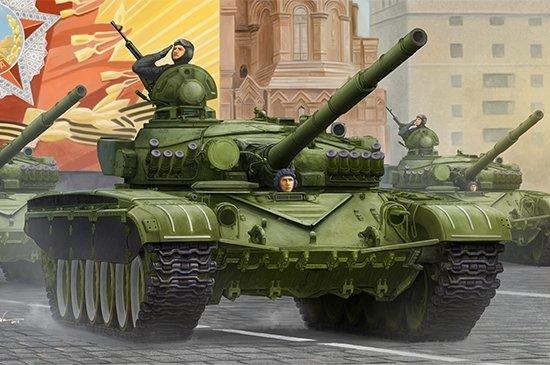Russia possesses approximately 800 T-72 main battle tanks dating back to the 1970s, specifically the early T-72A and T-72B variants, and has announced an ambitious plan to modernize its entire fleet. This large-scale upgrade initiative aims to extend the operational life and combat effectiveness of these Cold War-era armored vehicles, reflecting Moscow’s continued emphasis on maintaining and enhancing its armored capabilities amid evolving military challenges. The comprehensive modernization effort, detailed by defense analyst David Axe in Trench Art, highlights both the strategic importance of the T-72 series to Russia’s armored forces and the technological advancements incorporated to keep these decades-old tanks relevant on modern battlefields.
Russia Undertakes Ambitious Overhaul of Aging T-72A and B Tank Fleet
Russia is embarking on an extensive modernization program targeting its vast inventory of T-72A and T-72B main battle tanks, some dating back to the 1970s. With roughly 800 units still operational, the effort aims to extend the service life and enhance combat capabilities of these aging platforms. The upgrades include advanced fire control systems, improved composite armor packages, and more powerful engines, bringing these once outmoded vehicles closer to modern standards. This initiative reflects Moscow’s intent to maintain a credible armored force without the immediate costs associated with developing or acquiring next-generation tanks.
Key elements of the upgrade include:
- Modernized sighting and targeting systems – enhancing accuracy at longer ranges
- Reactive and composite armor enhancements – improving survivability against anti-tank weapons
- Upgraded powertrains – increasing mobility across diverse terrains
- Improved communication suites – allowing better coordination on the battlefield
| Upgrade Component | Expected Improvement |
|---|---|
| Fire Control System | +30% accuracy at ranges ≥ 2 km |
| Armor Package | Resists new-generation ATGMs |
| Engine | +15% horsepower for enhanced maneuverability |
| Communications | Encrypted voice and data links |
Modernization Upgrades Aim to Enhance Firepower Mobility and Survivability
The extensive overhaul program for Russia’s aging T-72A and T-72B tanks focuses sharply on boosting three critical battlefield attributes: firepower, mobility, and survivability. Engineers plan to install advanced 125mm smoothbore cannons paired with upgraded autoloaders, enhancing both accuracy and rate of fire against modern armored threats. Complementing this firepower boost, the integration of cutting-edge fire control systems will enable quicker target acquisition and improved engagement effectiveness, even under adverse conditions.
On the mobility front, new multi-fuel engines coupled with reinforced suspension systems promise enhanced operational range and agility over diverse terrains. Survivability enhancements revolve around state-of-the-art composite armor kits and explosive reactive armor (ERA) modules designed to mitigate the impact of anti-tank munitions. Additional upgrades include:
- Active protection systems (APS) to intercept incoming projectiles
- Improved thermal imaging and infrared sensors for all-weather visibility
- Upgraded communication suites enabling secure, real-time battlefield networking
| Upgrade Aspect | Key Features | Expected Impact |
|---|---|---|
| Firepower | 125mm cannon, new autoloader | Increased lethality and rate of fire |
| Mobility | Enhanced engine, reinforced suspension | Improved speed and terrain adaptability |
| Survivability | Composite armor, ERA, APS | Higher protection against modern threats |
Experts Recommend Prioritizing Advanced Electronics and Armor Enhancements
Military analysts underscore the critical necessity of prioritizing advanced electronics and armor enhancements in the extensive modernization of Russia’s aging T-72 fleet. With nearly 800 units dating back to the 1970s earmarked for upgrade, integrating state-of-the-art fire control systems, thermal imaging sensors, and improved ballistic protection is pivotal to restoring these tanks’ relevance on modern battlefields. Experts argue that without substantial improvements to situational awareness and defensive capabilities, these platforms risk being outmatched by contemporary armored vehicles.
Key recommended upgrades include:
- Digital fire control suites for enhanced targeting accuracy
- Reactive and composite armor packages to counter HEAT and kinetic threats
- Advanced communications systems for network-centric warfare
- Active protection systems (APS) to intercept incoming projectiles
| Upgrade Component | Expected Benefit | Priority Level |
|---|---|---|
| Thermal Imaging | Improved night vision and target acquisition | High |
| Reactive Armor | Enhanced protection against shaped charges | High |
| Active Protection Systems | Intercept incoming threats in real-time | Medium |
| Digital Radio & Data Links | Better battlefield communication | Medium |
Insights and Conclusions
As Russia embarks on the ambitious project to upgrade its extensive fleet of 1970s-vintage T-72A and B tanks, the move signals a continued commitment to modernizing legacy hardware amidst evolving military challenges. While these upgrades aim to extend the operational relevance of older platforms, analysts will be watching closely to assess how effectively Moscow can balance modernization with the realities of contemporary armored warfare. The coming years will reveal whether these refurbished T-72s can maintain their place in Russia’s armored forces or are ultimately overshadowed by newer designs.




